Switch to the mobile version of this page.
Vermont's Independent Voice
- News
- Arts+Culture
- Home+Design
- Food
- Cannabis
- Music
- On Screen
- Events
- Jobs
- Obituaries
- Classifieds
- Personals
Browse News
Departments
Browse Arts + Culture
View All
local resources
Browse Food + Drink
View All
Browse Cannabis
View All
Browse Music
View All
Browse On Screen
Browse Events
Browse Classifieds
Browse Personals
-

If you're looking for "I Spys," dating or LTRs, this is your scene.
View Profiles
Special Reports
Pubs+More
Fave Little State: Climate Migrants From Around America Are Seeking Refuge in Vermont
Published January 12, 2022 at 10:00 a.m. | Updated March 7, 2022 at 6:16 p.m.
Cheryl Lubin adored her Cape Cod vacation home. The cedar-shingled retreat featured a chef's kitchen, wraparound deck, views of a salt marsh and easy access to famed beaches. After years of renovating the 3,400-square-foot property in Chatham, Mass., Lubin and her husband retired there in 2017, expecting to stay for the long haul.
The climate crisis had other plans for them.
The next year, Hurricane Michael dropped six inches of rain on the Cape, flooding roads. Rising sea levels eroded beaches and made roads impassable during big storms. But it was twin tornadoes that uprooted them from their increasingly anxious life on the coast.
In July 2019, the twisters tore across the southern Cape, toppling hundreds of trees, knocking out power to thousands, and filling Lubin with a sense of personal and financial dread.
"The tipping point for us was the extreme weather," Lubin said last month. "People ask me why I left Cape Cod. They say, 'It's so beautiful.' And all I can say is, 'Climate change is real, folks.'"
So last year the couple did what a growing number of people alarmed by the climate crisis are doing: They moved to Vermont.
After reviewing national climate maps that predicted less severe climate change in northern New England, the pair snapped up an old farmhouse on two acres outside Norwich. They even adopted the farm's dog, Mitzi, who had lived in the home until her owner died.
Now they're renting a condo just over the state line in Lebanon, N.H., while they have the home updated for energy efficiency. They have joined a local gym and look forward to becoming part of the Upper Valley community.
"I think Vermonters understand that there are people looking to find higher ground, not only for themselves but for their families," Lubin said.
Americans fleeing coastal storms, relentless heat and western wildfires are finding refuge in the Green Mountain State. As large areas of the nation become inhospitable or even uninhabitable, Vermont's cool climate, abundant water supplies and tradition of environmental stewardship are proving increasingly attractive to people with the desire — and the means — to relocate.
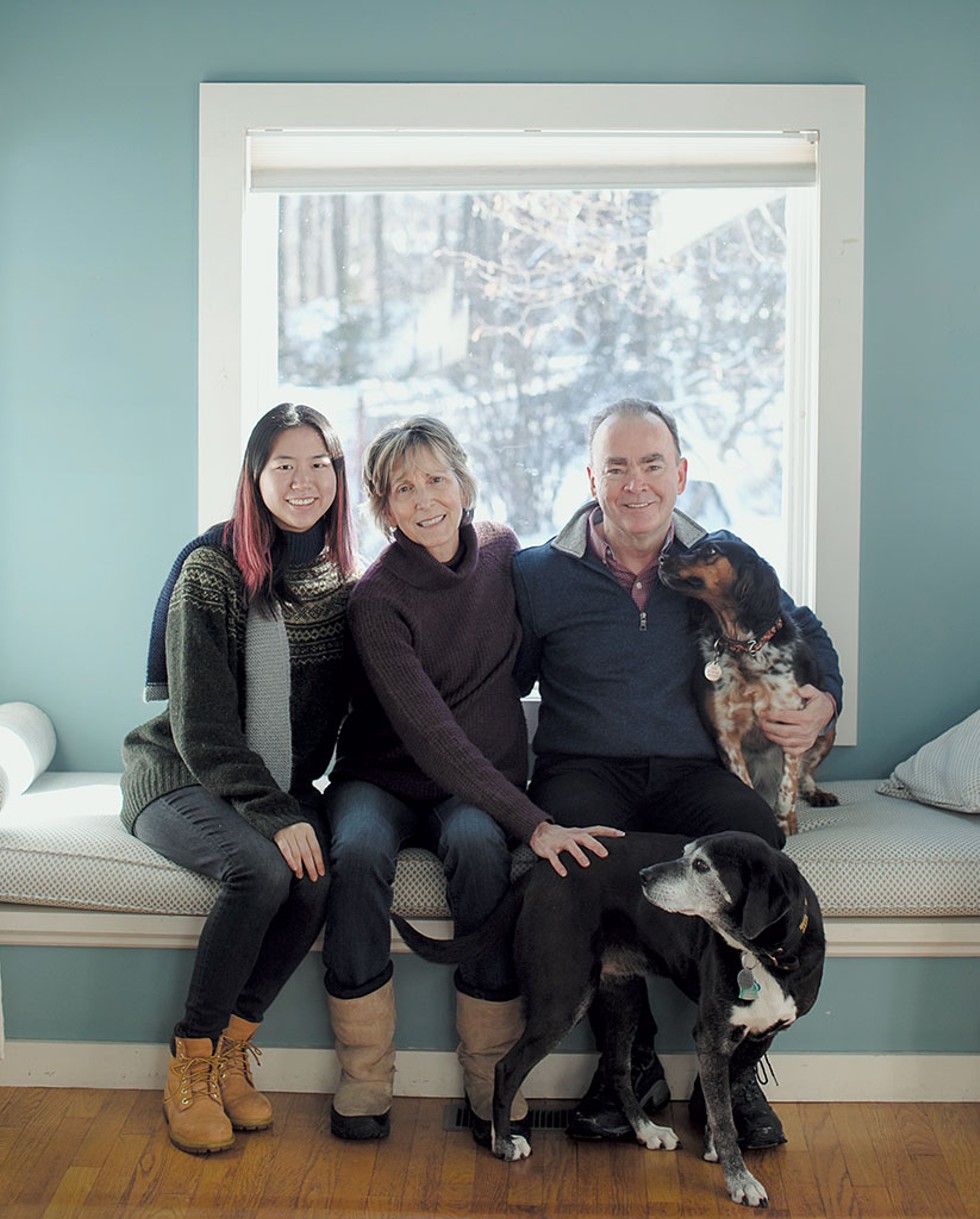
- Sarah Priestap
- From left: Annie and Cheryl Lubin, Dave McNally, and dogs Rosie and Mitzi
Climate scientists have warned for decades that runaway emissions from the burning of fossil fuels could warm the planet in ways that trigger mass migration and economic and political destabilization. Even if net emissions are reduced to zero by midcentury and the worst impacts can be avoided, some changes, such as sea level rise, will be irreversible, according to the United Nations' Intergovernmental Panel on Climate Change.
"Tens of millions of people are likely to be displaced over the next two to three decades due in large measure to climate change impacts," according to a 2021 White House report on worldwide climate migration.
Major climate-related population shifts are predicted within the United States. As many as 36 million Americans in the South and Midwest are expected to move toward California, the Mountain West or the Northeast in the coming decades, according to a 2018 study in the Journal of the Association of Environmental and Resource Economists.
A 2017 study by the U.S. Environmental Protection Agency ranked Vermont as the fourth most resilient state for climate change, after Alaska, Maine and Hawaii.
The climate crisis will bring warmer, shorter winters; more intense flooding; and invasive species to Vermont, experts say.
Yet study after study pegs Vermont as well positioned to weather the ravages of a rapidly warming planet. A 2020 county-by-county analysis of the United States by ProPublica ranked six of the top seven counties for climate resiliency in Vermont. The scores were based on six anticipated impacts: heat, heat and humidity, crop yields, sea level rise, wildfires, and economic damage. Lamoille County earned the highest resiliency score in the country, while each of Vermont's 14 counties ranked in the top 100 out of more than 3,000.
Predicting climate migration and documenting it, however, are very different undertakings. People tend to move for a combination of reasons: to take a new job, pursue a healthier lifestyle and care for aging family members, for example. No single data set shows why people move from one place to another. Spikes in real estate sales and change-of-address requests can hint at shifts.
But Cheryl Morse, a social geographer at the University of Vermont, has been struck by how significant a role the changing climate has played in the decision making of the state's newest arrivals.
Last year, Morse interviewed nearly 30 recent transplants to better understand their motives for relocating. She expected many would cite, among other things, the COVID-19 pandemic, and many did.
"But I was surprised at how many people were talking about climate as a driving factor for their move to Vermont," she said. "I always thought it would be something off in the future, but it's now."
Morse said she's not aware of any data measuring the scale of climate migration to Vermont but said her research, which she plans to publish this year, convinced her it is a reality.
Zack Porter is part of that emerging trend and has little doubt that others will follow him to Vermont. Porter was living in the Rockies with his young family in 2017 when wildfires struck, making him fear for his infant daughter's health.
"Montana was home, but it was really challenging to imagine having her grow up experiencing summers like those," said Porter, who now works for the environmental advocacy organization Standing Trees.
Porter and his wife made the painful decision to move in 2018 and feel fortunate to have settled in Montpelier when they did. Last summer, smoke from wildfires in his former home, 2,500 miles away, clouded the skies above his new one.
"It's clearly just going to keep getting worse," he said.
Ready or Not
click to enlarge 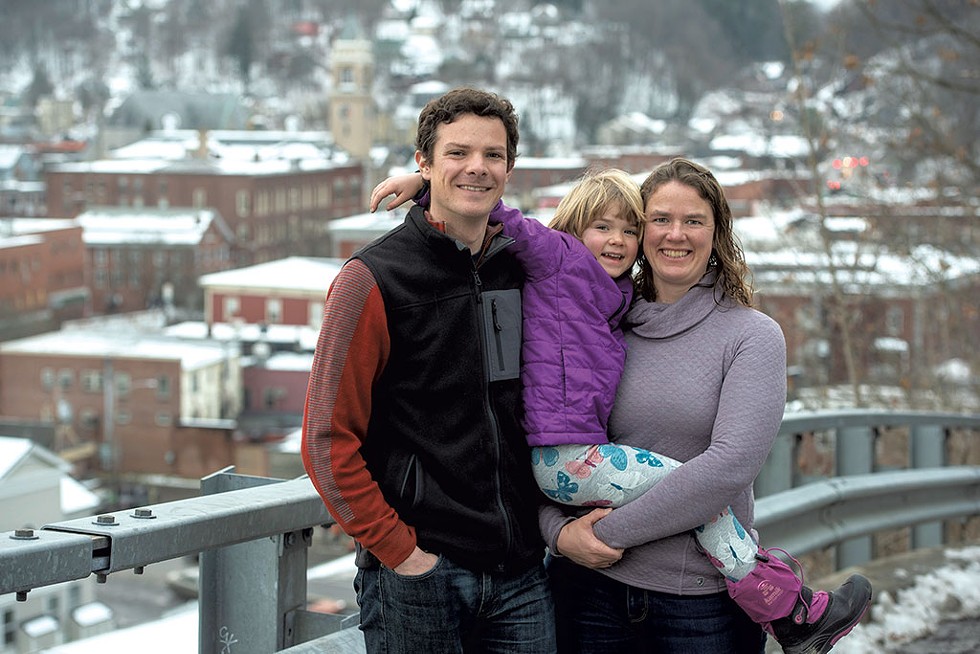

- Jeb Wallace-Brodeur
- Zack Porter and his wife, Kassia Randzio, with their 5-year-old daughter, Celeste
Viewed one way, this influx of new residents is a godsend, a way to invigorate Vermont's stagnant, aging population; infuse the economy with much-needed workers and consumers; increase enrollment in local schools; and expand the state's tax base.
"We would be foolish not to welcome refugees of any kind," said Joan Goldstein, commissioner of the Department of Economic Development.
The state has been so eager to lure young families that it has reimbursed workers who relocate to Vermont up to $10,000 in moving expenses, though grants are now limited to $7,500. In his State of the State address last week, Gov. Phil Scott identified boosting the state's workforce as a priority in 2022.
Yet a surge of new residents flush with cash from selling homes in pricier markets could exacerbate the state's housing shortage and make it more difficult to solve environmental problems such as greenhouse gas emissions and water pollution.
A rising population — whether driven by COVID-19 or climate change — could further drive development of the state's natural and working landscapes, said Jamey Fidel, general counsel for the Vermont Natural Resources Council.
In recent years, the state has been losing about 14,500 acres of forestland a year to residential development. As more people move to Vermont and real estate prices surge, it stands to reason that development pressure will grow, he said. This is one reason Fidel's organization has been pushing for changes in Act 250, the state's land use law, to encourage development in downtowns and to more effectively protect forestland.
Elena Mihaly, vice president of the Conservation Law Foundation, said Vermont should "go on the working assumption that we should prepare for more people."
A Norwich resident, Mihaly has noticed people choosing to move to her community with climate in mind. Jobs used to act as a "choke hold" on people's mobility, but the pandemic-era rise of remote working has freed people to live in regions that lack daily apocalyptic threats, she said.
"People were already thinking about moving because of climate, and the pandemic is the catalyst — the tipping point, if you will — that got them to actually make the move," she said.
If the state fails to plan for such growth, then the housing crisis and the inequities that stem from it will only deepen, said Chris Campany, executive director of the Windham Regional Commission, which helps cities and towns manage growth.
"We have such a small population and so little housing already that it doesn't take many more people to suddenly say, 'Hmm, I like Vermont' to make a big difference," Campany said.
Without a focused and sustained effort to ensure middle-class Vermonters don't get priced out, the state risks becoming like resort communities populated by wealthy residents and the lower-income service workers who cater to them, he said.
A number of academics, planners and environmental advocates say that if Vermont plays its cards right, it could enjoy the best of both worlds. If cities and towns plan wisely, the state could reap the economic benefits of the influx without the loss of rural character that many fear, said Erich Osterberg, associate professor of Earth sciences at Dartmouth College.
Osterberg is a member of the Upper Valley Adaptation Workgroup, which has been meeting for a decade to help strategize ways to make the region more resilient. In recent years, it has focused more on migration patterns. Osterberg thinks development to accommodate new residents should be steered toward walkable, transit-oriented village centers and away from large-lot, single-family subdivisions on farmland or forest.
Planning efforts in the Upper Valley have focused on ways to allow existing neighborhoods to accommodate denser housing, including multifamily homes, garage conversions and accessory dwelling units such as in-law apartments.
Creating such plans statewide, implementing the zoning needed to enforce them, and making expensive public investments in water and wastewater systems are daunting tasks, Osterberg acknowledged. But the pandemic has clearly demonstrated what failing to plan for new residents looks like, he said.
The recent spike in Vermont housing prices, driven largely by people leaving big cities as COVID-19 spreads, underscores the kinds of inequities that will only sharpen if climate migrants descend on a state unprepared for them.
"You see wealthy migrants come in and swoop up all the available land, prices go through the roof, and it prices out our local residents who don't have those same resources," he said.
Effective local planning that meets the housing demand while protecting and enhancing the attributes that make Vermont special is key to avoiding the sprawl that has overrun other places, he said.
"If we just sit back and say, 'Hey, I don't want them here,' well, sorry folks: They are coming," he said.
Just Breathe
click to enlarge 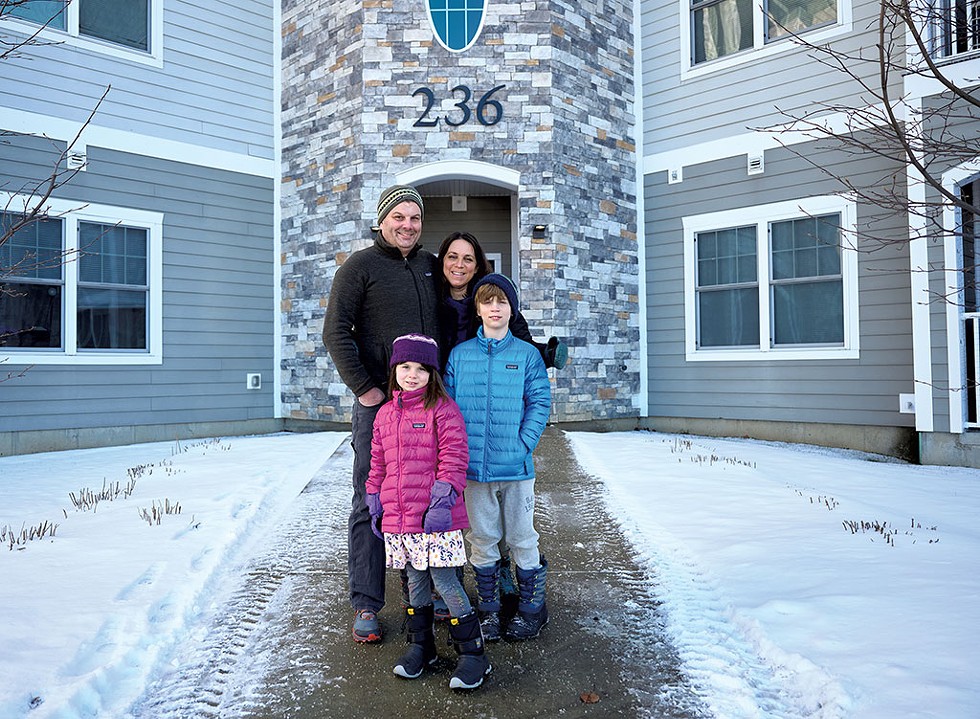

- Bear Cieri
- Dawn Serra with her husband, Jamie Lennox, and her two children, Bodhi and Siena, at their Williston apartment
When Dawn Serra stepped off the plane in Missoula, Mont., in mid-July 2017, the smell of acrid smoke filled her with fear.
After a decade in Montana, she and her husband, Jamie, had come to expect late summer wildfires in the forests of the rapidly drying West. But this was the first time she could recall smoke casting a pall over their home so early in the fire season.
Days later, a new blaze erupted on nearby Lolo Peak, just south of Missoula. The stubborn fire took weeks to contain, charred 54,000 acres, forced the evacuation of 3,000 people and killed a firefighter.
The smoke from that wildfire and others lingered for months. So did Serra's anxiety over the quality of the air her two children were breathing.
"It was like them smoking cigarettes," Serra said. "That's when I said, 'Why are we here?'"
An outreach coordinator with the environmental advocacy group Wilderness Watch, Serra understood that the strategies used to combat the wildfires — controlled burns to create fuel breaks — were likely to continue harming the air quality for years to come.
She spoke to friends who had moved to Vermont and expressed relief to be in a place that felt safe. Serra and her family visited in 2019 and began planning to relocate. The pandemic delayed their move, but they returned this summer. Her husband found a job at a New Haven construction firm, and Serra's organization agreed that she could work remotely.
So they sold the home they'd owned in Missoula since 2009, banked a handsome profit and pulled up stakes. Since late October, they have rented in Williston while deciding where they should buy. Serra has heard the stories about bidding wars and sees firsthand how few houses are for sale.
Having sold a home in a hot market, Serra said she knows that she may end up outbidding a Vermont family unable to afford the soaring prices that migrants such as her family are helping fuel.
"I do recognize that I am part of the problem," she said. "The irony is, we came from a place that had exactly the kind of development pressures that are being seen now in Vermont."
The median home price in Vermont has risen by 32 percent since 2019, hitting $325,000 in December, according to data from the Vermont Association of Realtors.
Prices started rising sharply in May 2020 as urbanites fled major cities ravaged by the pandemic. Out-of-state buyers often snapped up units sight unseen. The torrid sales pace slowed somewhat in 2021, but prices have continued to rise. Demand was driven not only by out-of-staters drawn to a place with a well-publicized record of controlling COVID-19, but also by extremely tight inventory and historically low interest rates, said Peter Tucker, the association's director of advocacy and public policy.
"I think we're finally running out of stuff we can sell," he said.
Out-of-state buyers have always played a role in the Vermont real estate market, but in 2020 they swooped in with a vengeance, especially in ski towns.
They snapped up 1,000 more properties than the previous year, a 38 percent increase, and ponied up $1.43 billion for them, a stunning 79 percent increase, according to state property transfer tax data.
Ski towns such as Dover, Ludlow, Killington and Stowe all saw dramatic increases in sales to out-of-state buyers. Most were from major cities in the Northeast, but data showed that money poured into Vermont from all over the country. This included states with increased wildfire activity in recent years — California, Oregon, Washington and Colorado — as well as states that are already unbearably hot much of the year, such as Texas and Florida.
People from as far away as Hawaii, Alaska and the British Virgin Islands also picked up properties in the Green Mountain State.
Vermont's Department of Taxes hasn't yet analyzed the property transfer data for 2021. Tucker nevertheless expects it to show that out-of-state buyers are continuing to drive prices upward.
That doesn't mean that they are moving here solely due to climate concerns. In fact, the high concentration of purchases in ski towns by buyers from nearby cities such as Boston and New York suggests that the migration is driven more by COVID-19 than by climate, Tucker said.
But the interviews conducted by UVM's Morse clearly reveal that climate was top of mind for some new residents, even those who cited multiple reasons, such as the state's political leanings or outdoor recreation opportunities.
"It's a complex set of factors that makes somebody move," Morse said. "It comes out as they are telling the story."
Retirees Susan Ogden and her husband, Hank Prensky, are among those who cite several factors that drew them to Vermont but say it was climate change that drove their decision.
The couple was living outside Washington, D.C., in July 2020 when the heat and humidity became unbearable to them. The avid cyclists found the sweltering heat so oppressive that an hourlong ride would wipe them out. When they realized they'd be unable to do what they love for several months of the year, they packed it in.
"I said, 'You know what? I can't stand it anymore. I can't live here anymore. Let's move to Vermont,'" Ogden recalled.
The decision wasn't as out of the blue as it may sound. The couple are big fans of Sen. Bernie Sanders (I-Vt.), spent summers at a camp in New Hampshire and have good friends in Putney. They also love to cross-country ski, a pastime that milder mid-Atlantic winters made virtually impossible.
So they rented an RV in October, loaded up their dogs and headed north, camping, visiting friends and checking out potential homes. They decided that, despite the appeal of rural life, they also wanted the attractions and amenities of a city.
They settled on Burlington's New North End. After selling their D.C. home for $950,000, they were able to buy a smaller house for about $550,000. "That seemed like a really good price to us," Ogden said. They moved last February and couldn't be happier with their decision, she added.
New residents invariably bring new ideas about how things should be done, and Ogden and her husband are no different. Burlington's bike path is beautiful but also "really dangerous," with speeding cyclists who rarely signal and who risk conflicts with pedestrians and dog walkers, Ogden said, calling the ribbon of pavement a "free-for-all."
She plans to try to lobby the parks department to install safety signs along the bike path. Meanwhile, her husband, a former real estate agent, hopes to do something to improve how the city handles appeals of property tax reassessments, a process that, after they saw their property taxes soar, they felt was "unsatisfying," Ogden said.
Who's a Refugee?
While people are selling their homes in smoky regions across the country and starting new lives in the fresh, clean air of Vermont, they don't all accept the "climate refugee" label. Some are buying property but taking their time to make the move.
Jordan Fronk and her family have been finding summers in their home in Austin, Texas, increasingly oppressive. Her two kids practically live in the pool much of the year, and Fronk said she needs to be vigilant to prevent her dog's feet from getting burned on the scorching pavement.
So Fronk, who owns a company that makes artisan nut milks, and her husband bought a home in Charlotte last year. They plan to fix it up over time and use it as a summer escape and, perhaps, for ski visits. Once her kids graduate from high school in about eight years, she and her husband could relocate full time. They're more akin to climate investors than climate migrants.
They also could be labeled "amenity migrants." A 2020 study at Antioch University in Keene, N.H., found that most climate migrants to Vermont will likely fall into this category. These tend to be wealthy, older white people making a conscious choice to move to the area for its rural tranquility, natural landscape and outdoor recreation.
Vermont has long attracted retirees, and that will only accelerate as the climate crisis worsens, said Jesse Keenan, a Tulane University professor who has written extensively on climate and housing. Cities with infrastructure such as strong broadband, medical facilities and educational institutions are likely to attract the most migrants, he said. For these reasons, Burlington has always topped Keenan's list of cities likely to see an influx, he said.
Workforce shortages and Vermont's comparatively modest economic base mean Keenan "wouldn't anticipate explosive growth." Nevertheless, the arrival of those who can choose to move now could pave the way for future migrants.
"It's a leading indicator of what's to come," he said.
The unexpected pandemic convinced Fronk that she needed to take steps now to protect her family from a longer-term global crisis.
"I'd rather be proactive and thinking toward the future than just sitting around and waiting," she said.
For now, Fronk is allowing a family of Afghan refugees to stay in the home. The state is expecting to resettle 260 people from Afghanistan by the end of February, a task made challenging by the housing crunch.
Not everyone moving to Vermont with climate in mind is fleeing a crisis.
Claire Polfus moved to tiny Sheffield in the Northeast Kingdom from western Maine in 2019. That might not seem to qualify her as a climate migrant at all, but her decision to remain in New England was directly related to the state's abundant water resources.
The 2008 Middlebury College grad and accomplished cross-country skier moved out West after college and fell in love with it. She always expected to return after finishing studies in natural resources and conservation at UVM, but now she feels she cannot.
Doing fieldwork as a naturalist in Montana drove home for Polfus just how fragile life is in the arid West. She can't see herself returning to live in a place where water has become so scarce.
"It wasn't so much, Where is the safest place for me to be?" said Polfus. "It was more like, Where can I live most sustainably?"
Polfus received a small grant from the state's remote worker program, which pays certain expenses for people who move to the state and bring their jobs with them. She works remotely for a GIS mapping company.
While moving to Vermont was the right move for Polfus on many levels, she does not feel that she has dodged the climate bullet. What humanity is doing to the planet pains her deeply and inspired her work in habitat and wildlife conservation. As a student, she pushed Middlebury College to reduce its carbon energy footprint.
Now she sees the impacts of warmer winters all around her, including the rise of invasive species and the shorter ski season. While she's grateful to live near a place like Craftsbury Outdoor Center that can make snow for its cross-country trail network, she said it is heartbreaking to experience 50-degree temperatures such as those the state saw in December.
"For those of us who live here because we love winter, we're all just going to have to grieve that winter is disappearing," she said.
Many migrants who see Vermont as a climate haven also are acutely aware that their adopted home remains profoundly vulnerable. They see blue-green algae blooms choking waterways and know about the threat of more intense rainfall.
"I half-joke that I've probably traded fires for floods," Serra said.
The risk of flooding — driven home by the devastation of Tropical Storm Irene in 2011, as well as by more recent storms such as the Halloween flooding of 2019 — was on Lubin's mind as she scoured Vermont for somewhere safer than her Cape Cod retreat. She and her husband didn't even consider homes along the Connecticut River, for example, instead settling on an upland property beside conserved land well outside the floodplain.
"I don't think we're naïve enough to say we're going to avoid the impacts of climate change," Lubin said. "But I want to be in a place that understands it and tries to get ahead of it and mitigate what they can at this point."
Disclosure: Reporter Kevin McCallum and his family evacuated their home in Santa Rosa, Calif., in 2017 to flee the Tubbs Fire, at the time the state's largest wildfire. The house survived, but their California dream didn't; months later, they sold the house, climbed into an RV and started meandering east. Today, the family lives in Waterbury.
 Seven Days is examining Vermont's housing crisis — and what can be done about it — in our Locked Out series this year. Send tips to [email protected]. These stories are supported by a grant from the nonprofit Journalism Funding Partners, which leverages philanthropy and fundraising to boost local reporting.
Seven Days is examining Vermont's housing crisis — and what can be done about it — in our Locked Out series this year. Send tips to [email protected]. These stories are supported by a grant from the nonprofit Journalism Funding Partners, which leverages philanthropy and fundraising to boost local reporting.
Got something to say?
Send a letter to the editor
and we'll publish your feedback in print!
About The Author

Kevin McCallum
Bio:
Kevin McCallum is a political reporter at Seven Days, covering the Statehouse and state government. He previously was a reporter at The Press Democrat in Santa Rosa, Calif.
Kevin McCallum is a political reporter at Seven Days, covering the Statehouse and state government. He previously was a reporter at The Press Democrat in Santa Rosa, Calif.
More By This Author
Latest in Category
Speaking of...
-

Housing Bills Take Aim at Local Control in Vermont Towns
Jan 16, 2023 -

Sugarbush Resort to Build Worker Housing Near Mountain
Jan 13, 2023 -

Expensive Housing Is Limiting Who Gets to Live Where in Vermont — and Clouds the State's Future
Dec 7, 2022 -

New Programs Aim to Change Vermont’s Dismal BIPOC Homeownership Rates
Nov 30, 2022 -

Aging Vermonters Who Can’t Find New Housing Are Part of the State’s Real Estate ‘Gridlock’
Nov 2, 2022 - More »


































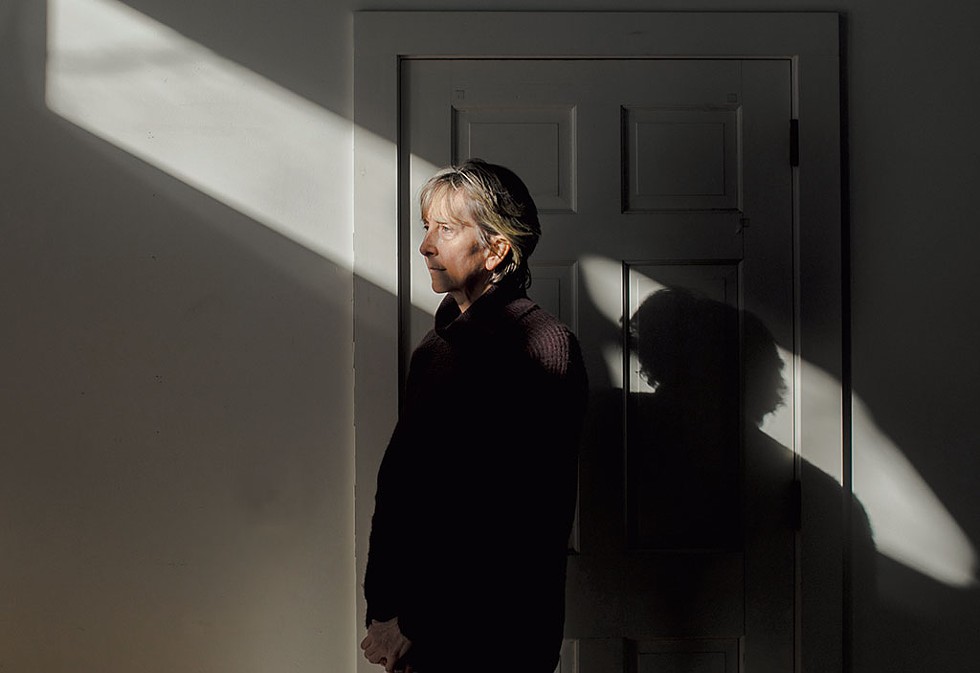
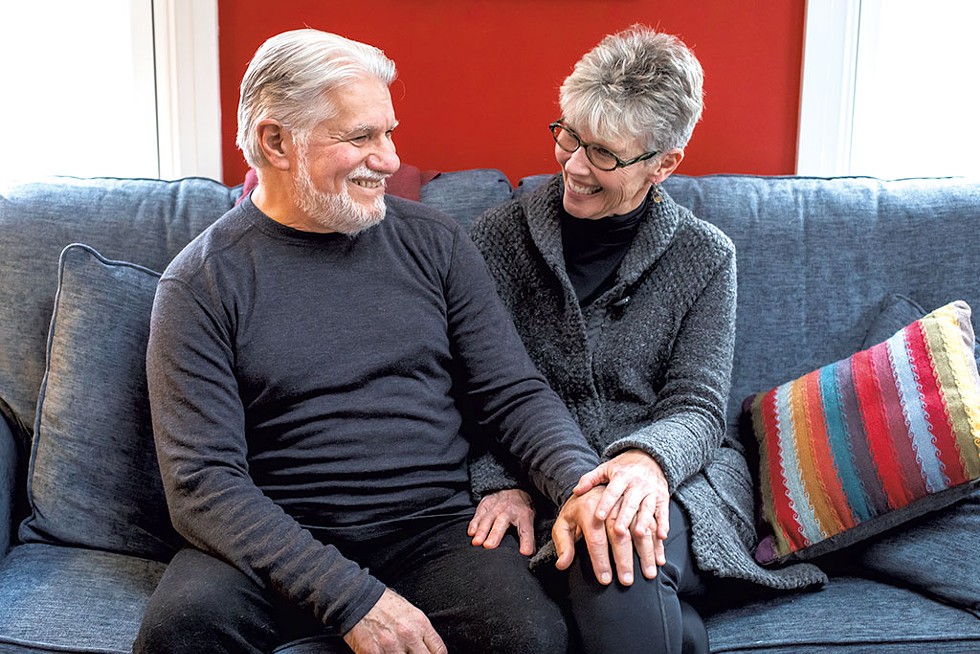
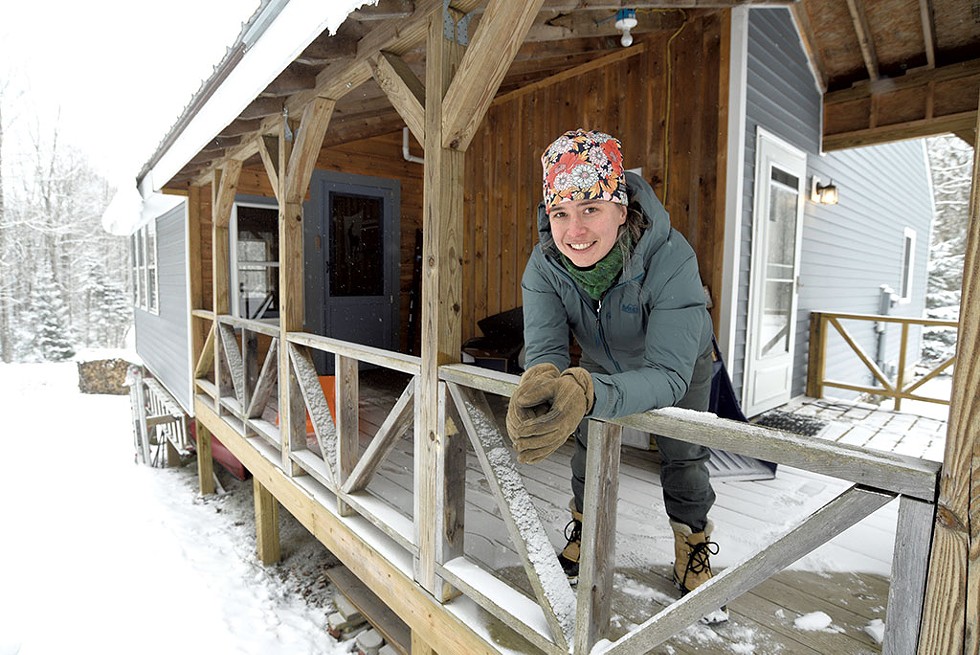


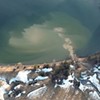

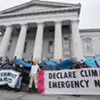
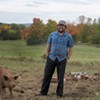
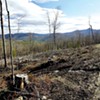

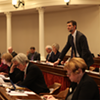



find, follow, fan us: